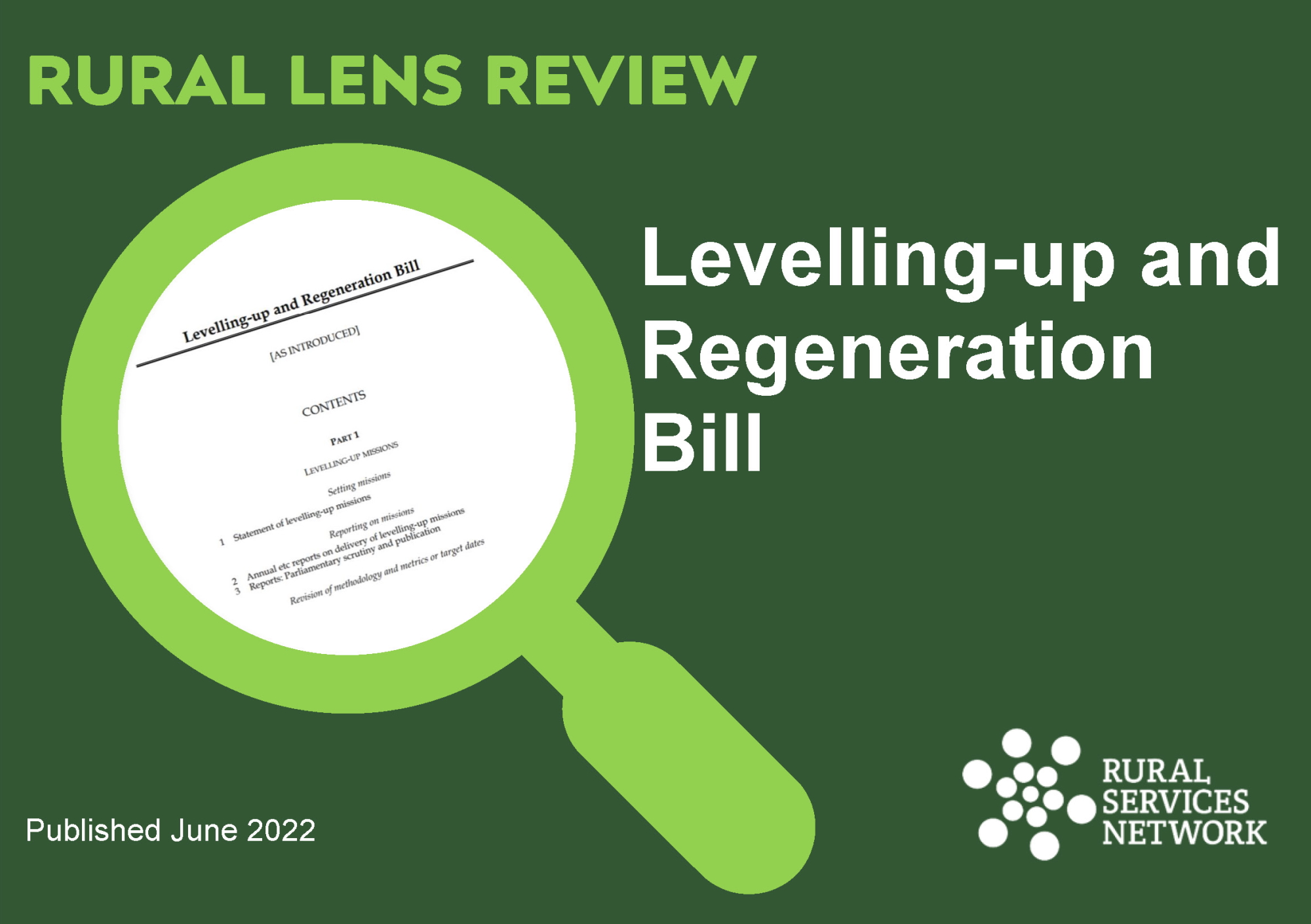T: 01822 851370 E: [email protected]
Rural Lens Review of the Levelling-up and Regeneration Bill
The Levelling-up and Regeneration Bill was published and given its first reading on 12 May 2022.
The Bill, “as well as delivering against some of the ambitions set out in the Levelling Up White Paper, it also incorporates some of the proposals for planning reform outlined in the earlier Planning for the Future White Paper (August 2020), where they support our (the Government’s) approach to Levelling Up”. It is stated that “in broad terms changes to planning procedures will begin to take place from 2024, once the Bill has Royal Assent and associated regulations and changes to national policy are in place”.
Alongside the Bill a Further Information Document was also published which is the main document the RSN is commenting on in this Rural Lens Review.
At a glance our key observations are as follows:
Levelling Up
- The RSN will press for changes to the Metrics as we consider that those in the White Paper collectively fail to consider rural disadvantage.
- If England’s rural communities were treated as a distinct region, their need for levelling up would be greater than any other – based on the government’s own headline metrics. Focusing on targets at a regional level fails to address the inequalities within regions.
- The RSN and other rural interest groups should strongly press that the Statement and the Annual Report should include information on rural as though it were a Region – progress (or lack of it) on meeting the objectives of the Missions will be lost in regional averages if this is not done. This is a fundamental Rural Proofing point.
Local Democracy and Devolution
- Creating a combined population of at least 500,000 (referred to in the White Paper but not specified in the Bill – it probably will be in regulations) will mean either enormous geographical areas or rural areas being combined with predominantly urban areas. Neither of which make sense for any concept of local. This minimum 500,000 population relates to “any tier of devolution”
- The bigger the geographical area for which a body has responsibilities the greater the number of very different types of communities within them. Combining rural areas with urban areas has, historically, meant rural losing out as it is almost always easier (and less costly) to achieve performance targets in densely populated areas than more sparsely populated rural areas
- It remains vitally important that in rural areas District, County and Unitary authorities receive a fair share of national government funding to support local government services. The determination of that fair share must fully reflect the additional costs of service delivery across rural areas and that is much more than just the costs of travel/travel time.
- Those areas which choose not to go down the CAA route must not be penalized financially through finance distribution formula for that decision
Planning and Regeneration
- The proposals are hugely detailed and technical. The RSN will wish to consult with its Planning Authority Members before commenting in any great detail. This Part 3 of this Rural Lens Review is therefore, at this stage, quite a high- level review of some of the main points as expressed in the FID (with some of the wording from the Bill in some cases) as we see them at this stage.
- We are concerned about the capacity of rural planning authorities to fully use the powers set out (regarding High Streets and Town Centres, for instance).
You can read the full Rural Lens Review by clicking on the image below:




